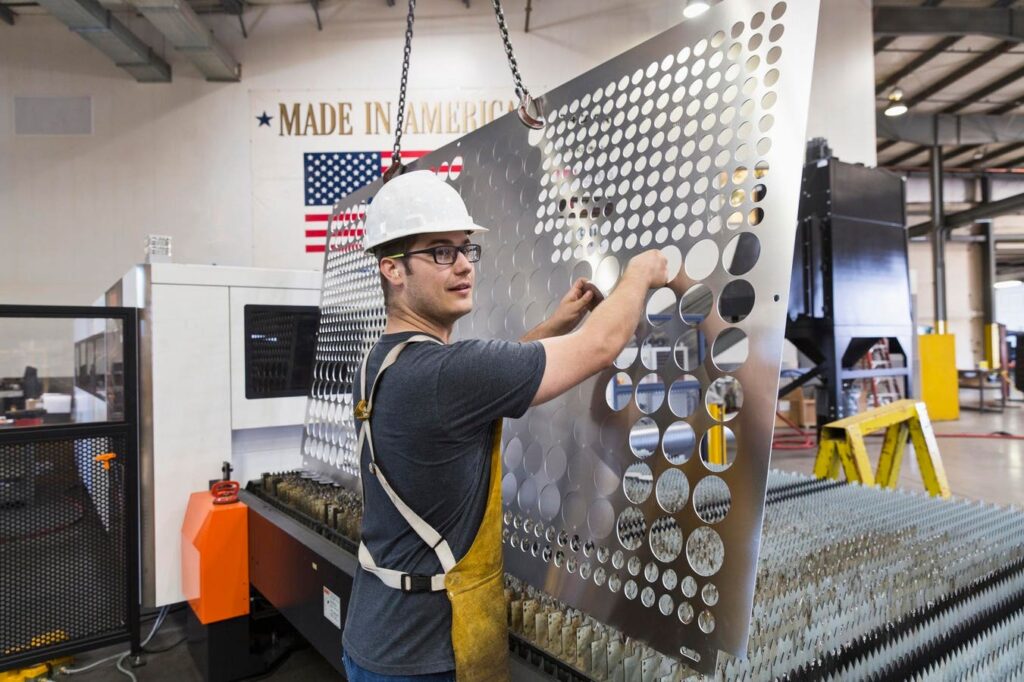Onahira Rivas is the founder and CEO of Florida’s Cotton Clouds.
I believe the journey to bring manufacturing back to America is more than an entrepreneurial endeavor—it’s a national imperative.
Over the decades, globalization and shifting economic priorities have led many American companies to move production abroad, trading quality and local jobs for cost efficiencies. The pandemic exposed some of the vulnerabilities of this dependence, with empty shelves symbolizing a fragile supply chain reliant on foreign manufacturers.
Yet, hope abounds. American entrepreneurship is alive and well, with a growing demand for products proudly bearing the “Made in the U.S.A.” label. According to a 2022 study, nearly two-thirds of U.S. consumers actively seek American-made goods. The next step in this movement requires an essential partner: retailers.
Retailers are the bridge between entrepreneurs and consumers. Their shelves—both physical and digital—are the platforms where American-made products meet eager buyers. To truly reindustrialize our economy and ensure American products regain their rightful prominence, retailers must prioritize stocking and promoting locally manufactured goods.
A Consumer-Driven Demand Requires Retailer Commitment
The desire for American-made products is not a passing trend but a profound shift in consumer values. Quality, safety and a commitment to local economies have become paramount to U.S. shoppers. They recognize that purchasing American-made items supports job creation and strengthens the domestic economy.
Many entrepreneurs are eager to play their part in a Made-in-USA renaissance, but they face a critical hurdle; committing resources to establish factories and adopt innovative technologies is a high-stakes endeavor without assurance that retailers will prioritize American-made products. Without clear support from retailers, the risk of producing goods that never reach consumers is simply too great.
Retailers hold the power to unlock this potential. By making a conscious choice to prioritize American-made goods on their shelves, they signal to entrepreneurs that the investment in domestic manufacturing is worthwhile. This commitment isn’t just about supporting manufacturers—it’s about creating a ripple effect that strengthens the nation’s economic future.
The demand for American-made products is loud and clear. But I see retailer buy-in as the linchpin that can either propel or stall the movement to bring manufacturing back to America. It’s time for retailers to step up and match the enthusiasm of consumers with action.
Retailers As Catalysts For Change
Retailers have a unique and powerful role in shaping market trends. By prioritizing American-made products, they can:
1. Support small businesses. Retailers who work directly with small manufacturers can diversify their product offerings while fostering local innovation. Partnerships with small businesses provide retailers with unique, high-quality items that resonate with consumers.
2. Educate consumers. Retailers can spotlight American-made goods through prominent store displays, labeling and marketing campaigns. Highlighting the local origin of products builds awareness and trust, making it easier for consumers to make informed choices.
3. Promote economic resilience. Stocking American-made products reduces dependence on global supply chains, enhancing reliability and reducing risks during international disruptions.
4. Support sustainability. As consumer interest in sustainability grows, retailers can highlight the reduced carbon footprint of locally manufactured goods. This aligns with broader efforts to meet environmental, social and governance (ESG) goals.
Challenges Retailers Face
Despite these benefits, challenges persist. Cost discrepancies between American-made and imported goods can deter some retailers from prioritizing domestic products. Additionally, many small manufacturers lack the scale to meet the demands of large retail chains. These hurdles, however, are not insurmountable.
Overcoming Barriers: A Collaborative Approach
Retailers, entrepreneurs and policymakers must collaborate to bridge the gap between production and consumption. Here’s how this can be achieved:
1. Retailer incentives: Government policies can play a crucial role. Tax breaks or subsidies for retailers stocking a percentage of American-made products can ease cost concerns and encourage widespread adoption.
2. Scaling partnerships: Entrepreneurs can band together to form cooperatives or alliances, pooling resources to meet retailer demands for volume and consistency.
3. Flexible procurement models: Retailers can implement tiered procurement strategies, dedicating sections of their shelves to smaller, locally sourced product lines.
4. Consumer education: Retailers can collaborate with manufacturers on marketing campaigns that emphasize the societal benefits of buying American-made goods, encouraging consumers to prioritize quality over cost.
The Role Of A New Administration In Manufacturing
Shifts in political leadership can bring new dimensions to the mission of revitalizing U.S. manufacturing. It’s important to look into how new leadership may prioritize policies regarding domestic production or emphasize issues like supply chain dependency, trade imbalances and manufacturing infrastructure.
With the coming administration, I believe entrepreneurs can expect a continued focus on reduced regulatory barriers for small businesses and enhanced incentives for domestic production. Future policies might include:
• Increased tax breaks for manufacturers: This can help encourage more entrepreneurs to set up factories.
• Revised trade agreements: These could favor local businesses over international competitors.
• Support for infrastructure: Boosting transportation and utilities is crucial for manufacturing growth.
For retailers, these shifts could translate into incentives to stock American-made goods, alongside policies encouraging their promotion and sale. The new administration, however, must work hand-in-hand with retailers and entrepreneurs to ensure these policies are actionable and impactful.
A Nation Reindustrialized
Imagine an America where shelves are stocked with high-quality, locally produced goods. Consumers, armed with the confidence to buy American, support their neighbors and communities. Retailers thrive as loyal customers return, not just for convenience but for values they believe in.
I believe this vision is within reach. The journey to reindustrialize America is not just about economics—it’s about restoring pride, resilience, and independence to the heart of our nation.
As consumers, retailers and entrepreneurs align, the movement to bring manufacturing back to America becomes unstoppable. The shelves of America’s retailers can become the showcase for the innovation, resilience and entrepreneurial spirit that define our great nation. Let’s seize this moment to make it happen.
Forbes Business Council is the foremost growth and networking organization for business owners and leaders. Do I qualify?
Read the full article here











